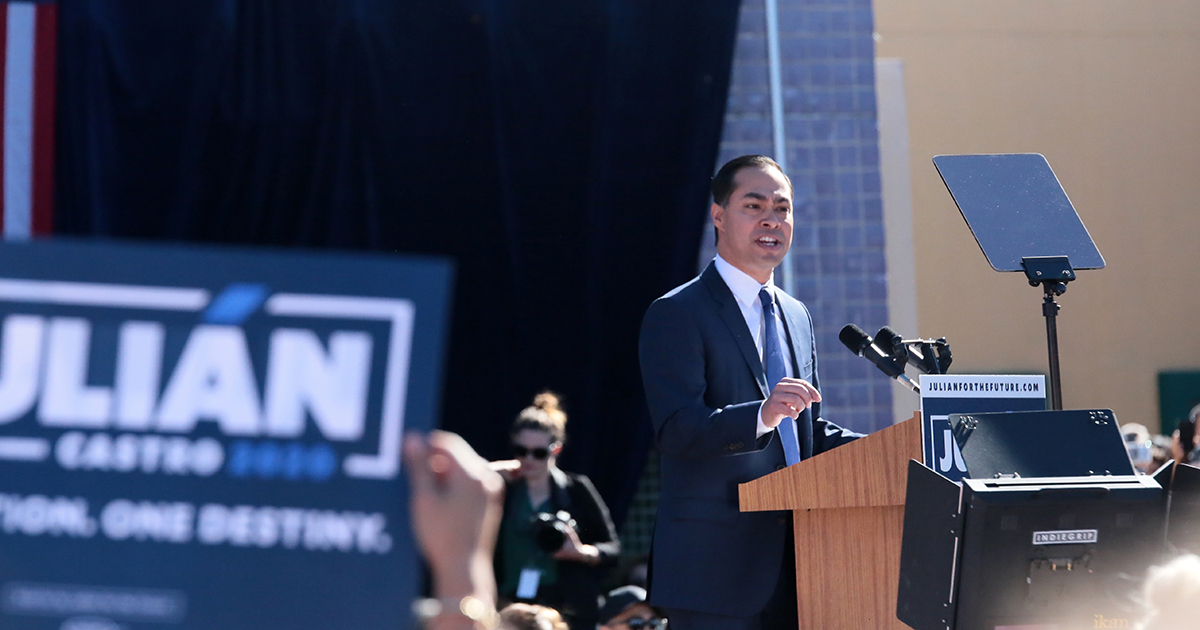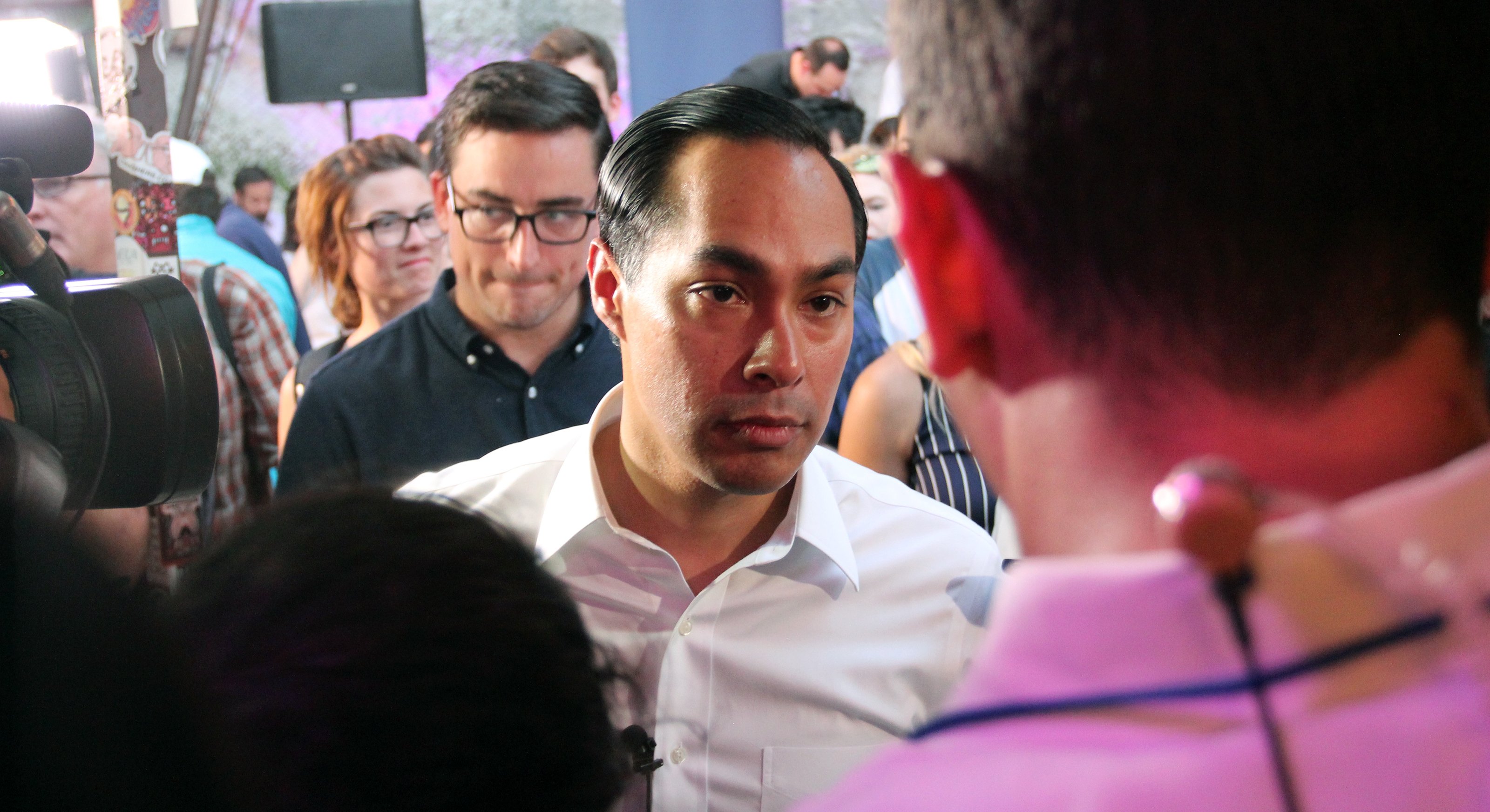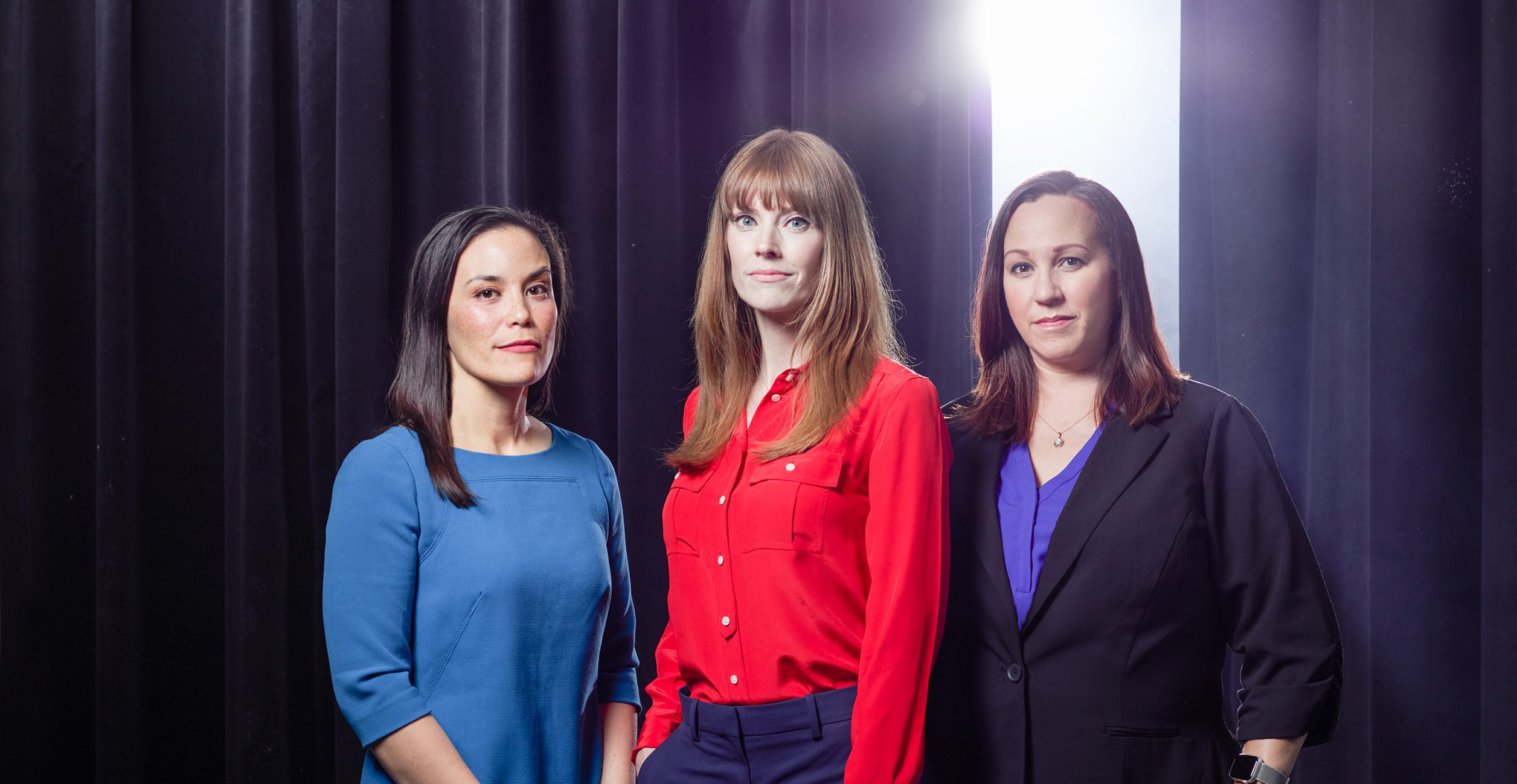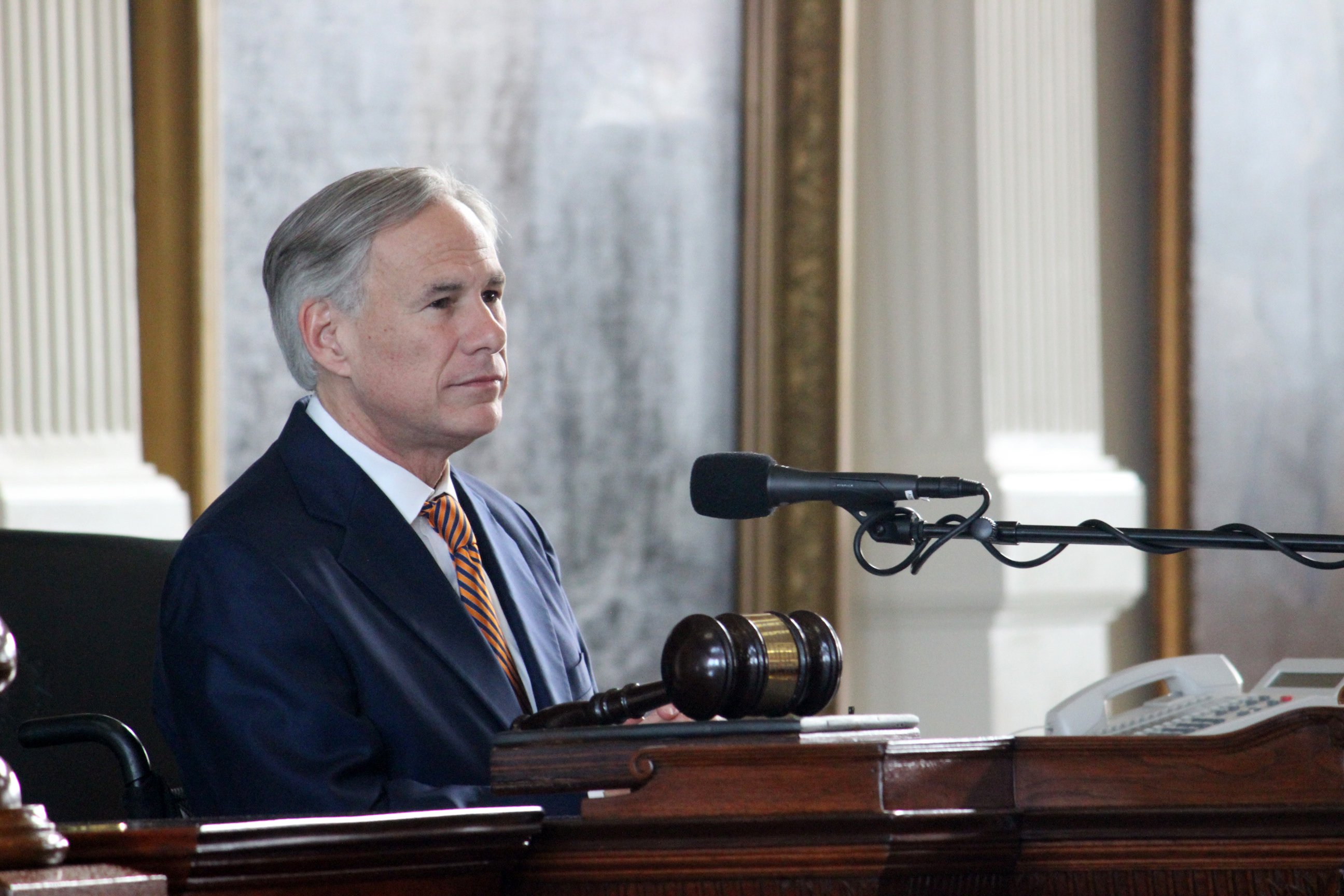
Julián Castro’s Climate Plan Addresses Environmental Racism
Other candidates focus on broad policies that affect everyone. That’s undeniably good, but it elides that fact that environmental injustices have historically hurt poor, minority communities the most.

At Wednesday night’s climate crisis town hall with the 2020 Democratic presidential candidates, a nurse from Brooklyn asked former San Antonio Mayor Julián Castro what his administration would do to address environmental racism.
Castro reminded the audience that his first campaign stop was in San Juan, Puerto Rico, which is still recovering from the effects of Hurricane Maria two years ago. “Too often, it’s people who are poor, communities of color, who take the brunt of storms that are getting more frequent and more powerful. So my plan actually calls for new civil rights legislation to be able to address environmental injustice,” Castro told the crowd, to a burst of applause.
Nearly all of the 10 candidates at the event vowed to reduce the United States’ carbon emissions, rejoin the Paris Agreement, and spur economic growth through investments in clean energy. On the whole, the plans are a repudiation of the Trump administration’s aggressively pro-industry, anti-environmental regulation policies, and an embrace of the Green New Deal, which has been championed by U.S. Congresswoman Alexandria Ocasio-Cortez.
“When you look at plans from Secretary Castro, and a number of other candidates, they are finally starting to get to the heart of the issue.”
But even in the crowded primary, Castro’s climate plan stands out for the emphasis it places on environmental racism—the fact that state and federal environmental laws often place hazards like power plants, oil and gas refineries, or landfills closer to communities of color and lower-income neighborhoods, while parks and other amenities get placed in whiter, richer neighborhoods.
Environmental justice has long been relegated to the fringes of the broader environmental movement. “This is the first time that environmental justice has been well thought out,” says Mustafa Ali, the vice president of environmental justice, climate, and community revitalization at the National Wildlife Federation. “When you look at plans from Secretary Castro, and a number of other candidates, they are finally starting to get to the heart of the issue.”
Ali would know. He helped found the Environmental Protection Agency’s office of environmental justice in 1992 under George H.W. Bush and led its programs for more than two decades. In 2017, Ali left the agency in protest, after the Trump administration suggested it would slash the environmental justice office’s budget, rendering it ineffective.
Castro’s plan doubles down on environmentalism as a civil rights issue, pointing to Executive Order 12898, which directs several federal agencies to consider environmental justice in its operations. Castro wants to codify the order into law, a move that would give it more teeth. Since the order was signed in 1994 by former President Bill Clinton, it’s helped bring environmental justice discourse into the mainstream, but it has been inconsistently enforced.

Juan Parras, the director of the Houston-based Texas Environmental Justice Advocacy Services (Tejas), tells the Observer that smaller, grassroots environmental groups were instrumental in getting the executive order signed. But the communities he works with near Houston’s Ship Channel—what he calls the “belly of the beast”—don’t always have the clout to fight the petrochemical companies that pollute the air and water of predominantly low-income, black, and Latino neighborhoods. The executive order, he says, gives groups like his some privileges and litigation rights. “But it’s not a law—if an administration doesn’t want to work with you, you just have to deal with that,” he says. Environmental justice groups have long pushed for the executive order to become a binding law, as opposed to just a “good faith” guideline.
Castro’s suggestion to do just that is critical, Ali says. “There are 17 federal agencies who have responsibility for environmental justice—it’s not just an EPA thing. It’s a housing issue, a transportation issue, a public health issue, a jobs issue,” he explains. When the EPA’s own policies seem to sideline environmental justice concerns, other agencies take that as a cue. “Making [the executive order] a law gives it the resources necessary for any plan to be holistic,” says Ali. “Laws are what drive these agencies, and when you don’t have that, you lose the ability for real enforcement and accountability.”
Castro would also reform the EPA’s Office of Civil Rights Compliance, which is tasked with enforcing civil rights protections and making sure that EPA-funded projects don’t have a discriminatory impact on communities of color. A few years ago, an analysis from the Center for Public Integrity found that nine out of 10 cases brought to the office were dismissed. Castro’s plan proposes a “private right of action,” or the ability for individuals to sue the government directly in instances of discrimination instead of relying on a government agency’s verdict. His plan also calls for dedicating resources to cleaning up Superfund sites and transforming them into spaces for renewable energy production or community development projects that would bring jobs to low-income areas that have been passed over by public and private spending.
“Any time you have a plan that recognizes and honors the fact that communities of color are the ones who are being disproportionately impacted, I think you have a good baseline where you’re starting,” Ali says. “If you’re not thinking about it through an environmental justice lens, and you think everybody’s equal, everybody has the same ability to bounce back—that’s not the case.”
Castro’s plan, released ahead of Wednesday’s televised town hall, calls for $10 trillion to invest in everything from infrastructure and housing to public transit and wetlands conservation. It calls for a moratorium on oil and gas operations on public land, and the end of subsidies for fossil fuel production. Under his plan, the U.S. would achieve net-zero emissions by 2045.
“Any time you have a plan that recognizes and honors the fact that communities of color are the ones who are being disproportionately impacted, I think you have a good baseline where you’re starting.”
The nuts and bolts of the plan are, for the most part, similar to what other candidates have proposed: It involves massive public spending and dedicated job retraining programs. It isn’t as ambitious in cost as Bernie Sanders’, which has a $16 trillion price tag, but it shares the broader goal of expanding social-safety nets, like public education and health care.
But Castro’s plan is the most specific in regards to solutions for communities of color and low-income communities.
By contrast, the plan of fellow Texan Beto O’Rourke mentions structural inequality that intersects with environmental policy, but it quickly pivots to large-scale technical solutions needed to save a sinking ship. His policy proposal—much like Joe Biden’s, Pete Buttigieg’s, and others—champions the idea that a rising tide lifts all boats: a greener economy, fewer greenhouse gas emissions, and cleaner air and water are good for all Americans, not just those most vulnerable to environmental discrimination.
There is an undeniable truth to that sentiment. And, of course, it’s a simpler and more unifying political message. But it elides the fact that not all Americans have experienced the nation’s environmental policy successes and failures equally. Study after study—even studies from Trump’s EPA—find that people of color and people living in poverty are still more likely to breathe polluted air and drink polluted water than affluent, white citizens, and industrial facilities are more likely to be sited near nonwhite neighborhoods. That’s certainly true of Port Arthur, a refinery town that Elizabeth Warren was asked about during the debate.
To stave off the apocalyptic scenarios that climate change could bring in the near future, the next administration will need to marshall all the technological solutions available. But those technological solutions won’t benefit all Americans unless they are accompanied by an understanding of the social history that has left certain communities behind others. No holistic climate change plan is complete without dedicated attempts to undo that legacy.
Read more from the Observer:
-
After the Midland-Odessa Shooting, Texas Republicans Double Down on God and Guns Doctrine: After the second Texas mass shooting in a month, Democrats call for action while Republicans promise to protect the “God given rights” of gun ownership.
-
The Environmental Protection Agency Wants to Repeal its Methane Emissions Limits: Texas, the nation’s largest oil and gas producer, doesn’t otherwise regulate the potent greenhouse gas.
-
Texas Schools Suspended Students Between Pre-K and Second Grade More than 70,000 Times in a Year: Black boys, foster care kids, and special ed students were disproportionately suspended, according to a new report from Texans Care for Children.


